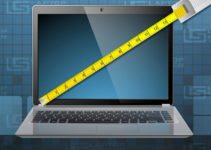Believe it or not! You would have come across membrane switches many times. It’s just that you are not familiar with the term membrane switch. But don’t worry you have come to the right place.
Today we will discuss what is a membrane switch exactly. How it works and its construction. In short, everything you need to know to understand what is a membrane switch? How many types of Membrane Switches are available? Let start.
Read Also: Are Keyboard Covers Good for Your Laptop
Utilizing Membrane Switches
Utilizing membrane switches has several benefits. For instance, their sealed construction safeguards them from moisture damage.
It is common knowledge that moisture and electronics do not mix. If moisture enters a switch, it may malfunction. This is not an issue with membrane switches, thankfully.
They are impervious to moisture and other contaminants due to their sealed construction.
Because membrane switches are sealed, they are simple to clean. You can either clean them with a conventional liquid-based cleaning solution or with simple soap and warm water. Additionally, membrane switches are long-lasting.
They are not as susceptible to wear and tear as standard mechanical switches. Therefore, they are an excellent investment for businesses.
Read Also: How Do You Fix a Broken Key on a Laptop
What is A Membrane Switch?
These days it’s nearly impossible that you have not used a membrane switch. If you have used a remote control, keypad, or keyboard, then you have used a membrane switch.
In simple words, a membrane switch allows a user to communicate with the machine. It acts as a pathway between the user and the device. It is a printed electronic circuit.
The circuit opens and closes by applying pressure on the switch. To make it easier to understand we can think of physical knobs or buttons. They work on the same principle as dials, buttons, and knobs work.
Read Also: How Much Is It to Fix a Broken Keyboard
Working of Membrane Switches
What is A Membrane Switch? Membrane switches work by using an electrical contact underneath the keys’ surface. When you press a key, the top circuit makes contact with the circuit registering the key press.
Therefore, the action starts to take place and the switch is ON. When you release the key the circuit breaks and the switch is OFF.
Reade Also: Why is My Laptop Keyboard Not Typing?
Construction of Membrane Switches
A membrane switch entirely consists of thin, flexible layers or membranes. It consists of six to seven membranes. Every layer serves its own purpose.
The first layer is a Graphic Overlay on which symbols or letters, etc. are printed. It is of polyester as it has exceptional chemical resistance. The second layer is Overlay Adhesive. It bonds the graphic overlay to the top circuit layer. It serves as a connection between the upper layer and the lower layer.
The third layer is the Top Circuit Layer which serves the purpose of stabilizing the heat. This layer is also responsible to provide tactile feedback. The fourth layer is Circuit Spacer.
It separates the top circuit from the bottom circuit. This layer normally remains open until and unless someone presses the switch.
Reade Also: Can I Use An External Keyboard with My Laptop
The next layer is the Lower Circuit Layer. It closes as a flexible tail. As it serves as the interconnect to PCBs or other electronics. The next layer in line is Rear Adhesive Layer. This layer bonds the entire membrane switch package to the product enclosure.
The last but not least is the Rigid Support Layer. This is an optional layer and might not be present in every switch membrane. Its function is to only add structural integrity to the membrane switch assembly. It is of aluminum, FR-4, steel, etc.
Read Also: How to Use a Mouse and a Keyboard with an XBOX
Advantages of Membrane Keyboards
In addition to their popularity, membrane keyboards have several advantages over other keyboard types. For instance, they are available in smaller sizes and with a lower profile. With a polyester layer, membrane keyboards are neither voluminous nor cumbersome. They support a range of sizes, with most membrane keyboards being small and low-profile.
Additionally, membrane keyboards are liquid-resistant. They are sealed to prevent liquids from reaching the circuits beneath the keys. If you’re looking for a keyboard to use in a humid environment or other humid environments, you may choose a membrane keyboard.
Due to their resistance to liquids, membrane keyboards are durable. They will typically outlast other types of keyboards. Consequently, a membrane keyboard is an excellent investment.
Backlighting is also an option for membrane keyboards. Many membrane keyboards are designed with optional backlighting.
Backlighting is comprised of embedded bulbs that illuminate the keys from behind. Backlighting options for membrane keyboards include electroluminescent (EL) and light-emitting diode technology (LED).
Read Also: How to Make Keyboard Cover Stick
Types of Membrane Switches
Membrane switches are broadly divided into two categories: Tactile and Non-Tactile.
Tactile Membrane Switches
Tactile membrane switches provide physical feedback to the user. The action begins as soon you press the switch. The action stops as soon you release the switch. They are used in places where an auditory and visual signal is not enough. The thermostat is an example of such a switch.
Non-Tactile Membrane Switches
Non-tactile membrane switches do not provide any physical feedback. An auditory or visual signal is required to inform the user about the action. For instance, LED or a beep sound. An example of such a membrane switch is a microwave keypad.
Switch Option Types
1.Silver Flexible Membrane Switches
This membrane switch is the most widely used membrane switch. It has screen-printed silver and carbon conductive inks. They are printed on flexible polyester layers separated by an adhesive spacer. It is flexible, thin, and has a custom membrane.
2.Copper Flex Membrane Switches
The Copper Flex Membrane Switch are best for places where you want to save space. They have silver or copper layers which are laminated to a dielectric layer and etched away.
3.PCB Based Membrane Switches
The PCB Membrane Switch has a printed circuit board (PCB). They serve a dual purpose in your membrane switch design. However, PCB Switches are expensive than Silver Flex membrane keypads. They have dense and complex circuit patterns than silver flex membrane switches.
4.Silicone Elastomeric Rubber
If you are looking for a reliable membrane switch then this switch is best. As they have exceptional resistance to extreme temperatures and aging. These switches use compression-molded silicone rubber. They are comparatively cheaper if seen per piece but have a bit expensive tooling.
Read Also: How to Change Color On Redragon Keyboard
How is Membrane Switch Different from Mechanical Switch?
Both membrane switch and mechanical switch serve the same purpose. But the basic difference between them is the overall construction. Membrane switches do not have separate moving parts. They consist of a single flat continuous layer, mostly protected by glass.
Read Also: How Many Keys Are on A Computer Keyboard
Why Membrane Switches Are Preferred Than Mechanical Switches?
Now that you know what is a membrane switch? How many types of Membrane Switches are available? Let’s take a look at why they are preferred:
1.Durability
Membrane switches are durable as they are sealed from the environment. The die-cut tapes hold everything together. They protect the switches from moisture and hazardous chemicals. Therefore, they are better than mechanical switches.
That’s why membrane switches are perfect for industries that work with strong chemicals. Membrane switches are used in fueling stations, medical facilities, laboratories, gyms, and kitchens.
The reason for their durability is also polycarbonate or acrylic graphic overlays. As they act as resilient and easy to maintain.
2.Flexibility
Membrane switch’s construction makes them flexible. They have thin, conformable tapes to protect them from rough use. They have one continuous layer interface, mostly sealed with glass. While mechanical switches include several moving parts that break off.
3.Easier To Clean
Membrane switches are super easy to clean as they do not have crevices between buttons. While crevices between buttons on mechanical switches trap dirt and germs.
The die-cut tape seals them completely. Therefore, the dust and dirt particles do not enter. In Medical equipment and gyms, they work best as they are hygienic. As they get clean and sterilized easily.
4.Easier To Design
The membrane switches are thin and therefore save a lot of space. This also makes it easy to design and integrate the HMI into the product. While mechanical switches take up a lot of space and time to design.
5.Affordability
Membrane switches are cheaper than mechanical switches. You can get them at the best price. One of the reasons for their less price is that they are easy to design and manufactured. They take one integrated switch instead of several individual moving parts.
6.Easier To Customize
Membrane switches are easily customizable. If you are tired of looking at the same old membrane switches you can print a design. You can give your membrane switch that looks.
Let’s take a look at some frequently asked questions related to what is a membrane switch?
Read Also: How to Speed Up Keyboard Without Any Difficulty
FAQs
Are membrane keyboards bad for gaming?
Membrane keyboards are often not preferred for gaming. As you can only register one keystroke in a single moment. Thus, it is possible that you press a key and it does not actually register. Whether you are gaming or typing, this can be a significant disadvantage.
Are Apple keyboards membranes?
Sadly, but the answer is No! Apple never used membrane keyboards. This is because the keystroke sometimes does not feel good. And also, it is difficult for a user to tell whether an action took place or not.
What switches do membrane keyboards use?
As tactile membrane switches provide physical feedback, therefore, modern PC use tactile membrane switches as keyboards membrane.
Can a membrane switch be repaired?
Of course, membrane switches are easily repairable. You can either replace them with push buttons or repair it. There is a repair kit for membrane switches. It comes with a pen using silver-based paint.
Are membrane switches tactile?
Membrane switches comes in both forms i.e., tactile and non-tactile. They have been widely used in industries due to their various advantages.
Conclusion
Membrane switches are human-machine interfaces composed of multiple layers of plastic films or other flexible materials. Conductive inks are printed or laminated onto these films. They function by opening or closing a circuit temporarily.
Read Also: Power Bank Solar Charger Instructions
Read Also: How to Reset Power Bank
Read Also: How to Repair a Power bank
Read Also: Can a10,000mAh power bank charge a laptop
Read Also: Power Bank for Laptops





